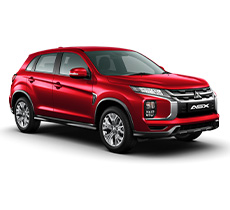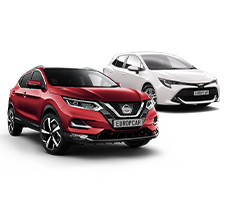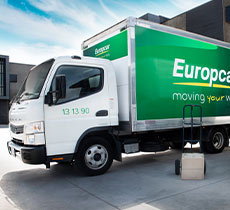Road Safety in Australia
Australia is a great destination to explore by car, offering an array of scenic road trips across coastal roads and city landscapes. But before you put the key in the ignition and hit the road, it’s important to put safety first and take the time to understand the local road rules.
Even though you may be an experienced driver, every country has different driving conditions and if you’re not familiar with the roads, the road signs, the road rules and the driving behaviour of other road users, you may unintentionally put yourself – and others – at risk.
We recommend anyone arriving from a long haul flight is well rested (overnight advised) before taking to the road in Australia.
At Europcar we are committed to promoting safety for all road users, which is why we are proud to support Tourism Australia in its efforts to raise awareness of driver safety for both international visitors and domestic travellers.
On this page, you will find a selection of helpful resources including driving tips, an information booklet and other handy resources, including translations in languages other than English.
For more information about driving in Australia CLICK HERE. The document is available in English, French, German, Italian, Spanish, Chinese, Japanese, Korean
Safe travels!
Top Tips
Make sure you're familiar with the following tips for driving in Australia.
|
|
Keep left. In Australia, you drive on the left side of the road. | ||
|
|
Give way at intersections. If you're turning, give way to all vehicles going straight. If at a roundabout, give way to all vehicles coming from the right side. | ||
|
|
Do not turn left at an intersection when the traffic lights are red. | ||
|
|
The driver must not use a mobile phone or operate the GPS while driving unless the device is completely hands-free. | ||
|
|
Be mindful of travel times. Australia has some hilly, tight, and winding roads so distances can be deceptive. Plan your journey, take your time, and do not rush. Do not drive when tired. Take breaks and enjoy the journey. | ||
|
|
Share the road with cyclists. Cyclists have the same rights as drivers. Slow down and pass safely and carefully. | ||
|
|
Do not drive under the influence of alcohol or drugs. | ||
|
|
The open road speed limit is a maximum of 100 km per hour. Generally, the road speed limit in urban areas is a maximum of 50 km per hour. At times you may need to drive slower due to weather, traffic conditions or winding roads. | ||
|
|
All passengers must wear seatbelts at all times, including children. Children under the age of seven must be secured in an approved child restraint. | ||
|
|
The driver must carry a current and valid driver licence and an English translation, if applicable, at all times while they are driving. | ||
|
|
Do not overtake or crossover when there is a solid line on your side of the road. | ||
|
|
Be aware of one-way roads, pay attention to road signs. | ||
|
|
Winter driving poses wet or icy conditions. Slow down and avoid breaking suddenly. Chains may be required in icy or snowy conditions. | ||
|
|
Be cautious of farm animals on rural roads. Slow down, do not sound your horn, and let the animals pass. | ||
|
|
Pay attention to public rail crossings with automatic alarms. If the red lights are flashing, stop and proceed once the lights have stopped flashing. Other crossings have a railway crossing sign and a give-way or stop sign. At these crossings, obey the road signs and only cross the track if there are no trains approaching. |
More Information
Road Safety rules may differ per state in Australia. For more information on road safety and things you can see while in Australia visit the following Internet sites.
| National | http://www.australia.com/ | http://www.atsb.gov.au/ |
| Australian Capital Territory | http://www.visitcanberra.com.au/ | http://www.tams.act.gov.au/ |
| New South Wales | http://www.visitnsw.com.au/ | http://www.rta.nsw.gov.au/ |
| Northern Territory | http://www.travelnt.com/ | http://www.dpi.nt.gov.au/ |
| Queensland | http://www.queenslandholidays.com/ | http://www.transport.qld.gov.au/ |
| South Australia | http://www.southaustralia.com/ | http://www.transport.sa.gov.au/ |
| Tasmania | http://www.discovertasmania.com.au/ | http://www.transport.tas.gov.au/ |
| Victoria | http://www.visitmelbourne.com/ | https://www.vicroads.vic.gov.au/ |
| Western Australia | http://www.tourism.wa.gov.au/ | http://www.officeofroadsafety.wa.gov.au/ |













